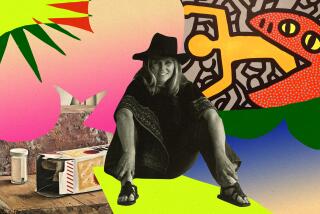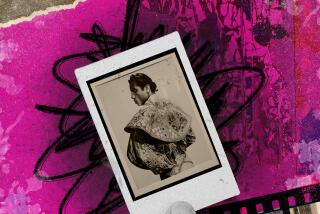Getty launches full text website for art history research
- Share via
When UC Santa Barbara professor Ann Jensen Adams, known for her work on 17th century Dutch painting, was given the chance to try a new research website from the Getty last week, she first typed in the name of a major artist and author in the search field: Karel van Mander.
She was surprised to find online a full-text version of Van Mander’s 1604 masterpiece, “Het Schilder-Boeck” (Book of Painters), which attempted to introduce Dutch and German painters like Vasari’s classic “Lives of the Artists” did for so many Italians.
“Up came the work on the first hit,” she said. “When I looked at who scanned the text, I realized it had been [online] for a while. But without this portal as a consolidator of information, I never would have found it.”
The Getty Research Portal, which officially launched Thursday, was developed by the Getty Research Institute, the Getty museum’s more academic sibling. But it’s meant to be accessible to anyone with an Internet connection -- scholar, student or just browser -- like an art-specific version of Google Books.
In this case, though, instead of embarking on a mission to digitize the printed world, the Getty is making use of digitized material already available. So far, the website links to about 20,000 titles, drawn from the GRI’s own holdings as well as from the libraries of eight institutions.
So far, Columbia University, the Frick Collection, the Metropolitan Museum of Art, the Brooklyn Art Museum, and the Museum of Modern Art in New York, the National Institute of the History of Art (INHA) in Paris, the University of Malaga in Spain and Heidelberg University in Germany have contributed. In all cases, the full digital texts of the books can be downloaded free of charge.
Because the texts are all in the public domain, published before 1923 in the U.S. or before 1909 in other countries, the website is stronger on Old Masters than, say, French Impressionism. A simple search for “Renoir” yields only five results; “Rembrandt” 51.
In either case, though, the emphasis is overwhelmingly Western. “We have only a few books in Chinese about Chinese art, for example,” said Murtha Baca, who directs the Getty Research Institute’s program in digital art history. “But that’s something we really want to change. This is only the beginning: the big focus in the following months and years is collection development.”
RELATED:The Getty Museum’s new Manet
LACMA, Getty among joining Google art site
Getty Research Institute’s Thomas Gaehtgens makes his mark
Follow the writer on twitter @jorifinkel
More to Read
The biggest entertainment stories
Get our big stories about Hollywood, film, television, music, arts, culture and more right in your inbox as soon as they publish.
You may occasionally receive promotional content from the Los Angeles Times.










